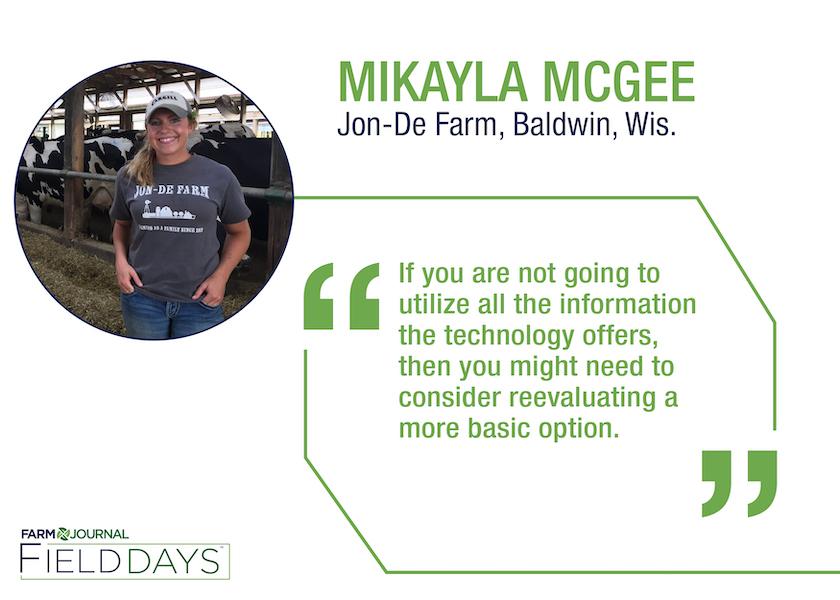Efficiencies and ROIs: Dairy Farmers Weigh in When it Comes to Technology

Optimizing productivity and improving efficiency are top goals that are talked about in farm meetings, illustrated through management practices, and closely monitored through financial budgets. The big-ticket question is, “What can help a dairy producer launch their operation to the next level?”
Cue in technology. During a Farm Journal Field Day session and recent Farm Journal MILK Innovative Dairy Producer webinar, three dairy producers openly talked about how return on investments (ROIs) come into play when making future technology investments for their dairy.
Each producer shared they had plans to increase efficiencies over the next one to five years.
- Mikayla McGee, Jon-De Farm, Baldwin, Wis., said her family has plans to add a carrousel parlor, which would allow them to eliminate milking on two sites and gain efficiencies that cannot always be documented on paper.
- Ryan Junio, Four J Jerseys, Pixley, Calif., is in a similar situation, as his family dairy is building a new 2,000-cow free stall barn that will allow them to bring all their cows to one central location. Doing this will allow them to expand on their methane digester, capitalize on the methane coming off that additional 2,000-cow facility, as well as better utilize labor on one site versus two.
- John Harrison, Sweetwater Valley, Philadelphia, Tenn., isn’t quite convinced now is the time to invest in big technologies. “I’m waiting to see how our dairy comes out of this downturn before making big decisions,” he says.
These three dairy farmers say carefully evaluating ROIs is not as simple as it might sound.
For Junio, he would like to see a new project cash flow itself before adopting it into his dairy. “It depends on the size and scale of the investment,” he says. “If it can pay its own mortgage, obviously that is a home-run idea.”
Harrison budgets for a 20% ROI return and hopes to get half of that before adopting new technology into his dairy operation.
McGee says calculating ROI isn’t a simple math formula and there are other factors to consider before adopting new technology. “If you are not going to utilize all the information the technology offers, then you might need to consider reevaluating a more basic option,” she says.
Conversations are unfolding, as producers delve into what technologies can efficiently serve as a launchpad to get their dairy to the next level.







